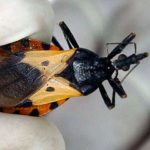A new study presented at the European Respiratory Society (ERS) Congress in Vienna has found that smoking before the age of 18 significantly increases the risk of developing respiratory symptoms, such as wheezing and phlegm, by the time individuals reach their 20s. The research, led by Dr. Linnea Hedman, associate professor of epidemiology and public health at Umeå University in Sweden, highlights the rapid and harmful effects of tobacco on young smokers.
The study tracked 3,430 children from northern Sweden, who were recruited at age 8 and followed up with annual questionnaires until they turned 19, and again when they reached 28. The results showed that 22% of participants became daily smokers at some point, with 29% starting before age 16, 35% between 16 and 17, and another 35% after age 18.
The findings reveal that starting smoking under 18 increases the risk of respiratory symptoms in early adulthood by 80%, compared to non-smokers. For those who began smoking at 18 or older, the risk was still 50% higher. The symptoms most commonly reported were wheezing, coughing, and the production of phlegm.
Dr. Hedman emphasized the urgency of addressing smoking among children and teenagers, stating, “In our study, we found that smokers are very likely to have taken up the habit before they turned 18, and those who did start early were more likely to be suffering with breathing problems.”
The researchers also noted that the total amount of cigarettes smoked, measured in “packyears” (the equivalent of smoking one pack per day for a year), significantly increased the risk of respiratory symptoms. Each additional packyear raised the risk by around 10%.
The study’s findings are particularly concerning given the prevalence of smoking among youth. In Europe, approximately 16.7% of males and 11.2% of females between the ages of 15 and 24 are daily smokers, highlighting a public health issue that could have long-lasting consequences.
Professor Des Cox, a consultant in pediatric respiratory medicine at Children’s Health Ireland, Crumlin, Dublin, and member of the ERS Tobacco Control Committee, who was not involved in the research, stressed the importance of early intervention. “We need regulations and support to help children and young people avoid or quit smoking,” said Prof. Cox. He also raised concerns about the growing popularity of vaping among teenagers, warning that while the long-term effects are still unclear, nicotine addiction remains a major concern.
The study provides a stark reminder that the harmful effects of smoking can manifest within just a few years, rather than decades, as was previously believed. Dr. Hedman and her colleagues plan to continue monitoring the participants’ lung function to further investigate the long-term impacts of smoking on respiratory health.
The ERS and other public health bodies continue to advocate for stronger tobacco control measures to protect children and adolescents from the harmful effects of smoking and nicotine exposure.
More Information: Abstract no: OA4675, “The importance of age of smoking debut and packyears on development of respiratory symptoms and asthma in young adulthood,” by Linnea Hedman. Presented at the session “Tobacco smoking and the respiratory system: a well-known dangerous liaison” on Tuesday, 10 September 2024.












